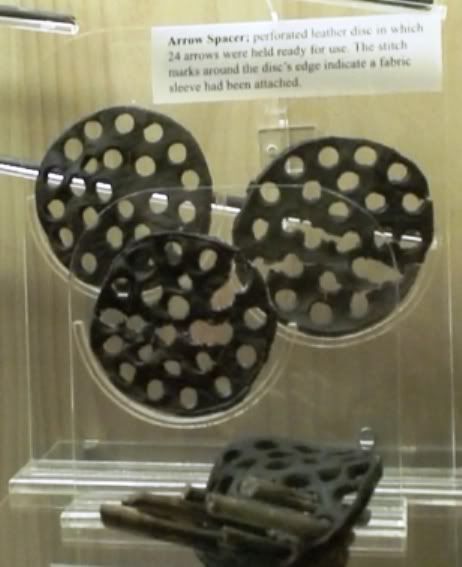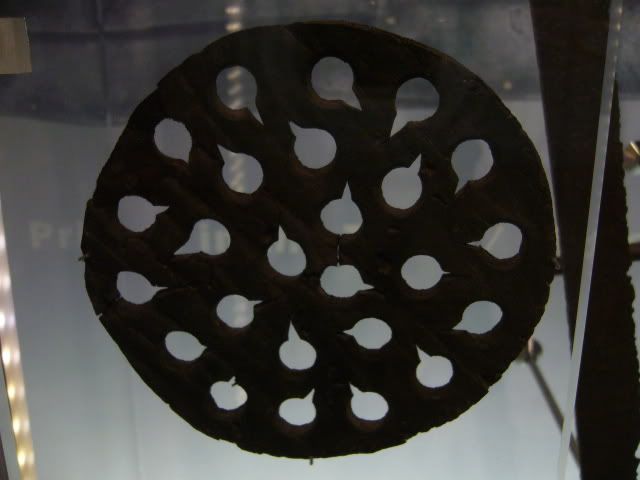Of course points used with spacers would have to be bodkin points. A photograph of a Tudor spacer posted on "English Warbow" as I recall, did definitely show a short slit at one side of each hole. Your photo is not clear enough to see whether there are slits or not. To add to my earlier post, why pull an arrow from the bottom when it is more convenient to pull it from the top without the slightest threat to the fletching ? Triton's suggestion that "To myself and others it makes sense to undo the the bottom of the bag, push the arrows from the top into the ground and pull the bag off over the top", might be difficult to manage on the hardwood deck of the Mary Rose. BTW, the longer arrows were bobtailed, the shorter ones were not tapered from the head.
Here is the close up image of the MR Spacer, you can plainly see that there are no notches in the holes.

Here is a picture of a spacer that is in the English Museum, this one clearly has notches cut into it, which could suggest that barbed heads could have been pushed through the holes, or as Triton suggests this slit could help with pulling the fletchings through the holes. Whether this is a tudor spacer or not I do not know, if it was then barbed heads would not have been used, so the fletching theory is the best argument.

There is no doubt that some of the arrow bags had openings in the bottom as well as the top, also that some only had openings in the top, it is questionable that the arrows were stuck in the ground and the arrow bag pulled over the top, but nevertheless there are naiive pictures from the medieval period which show both and also show the arrow bag rolled up at the bottom showing the different head types in the quiver and also the top rolled down showing the fletchings, so these were used, but in which way it is hard to say, so only good guesses can be made.